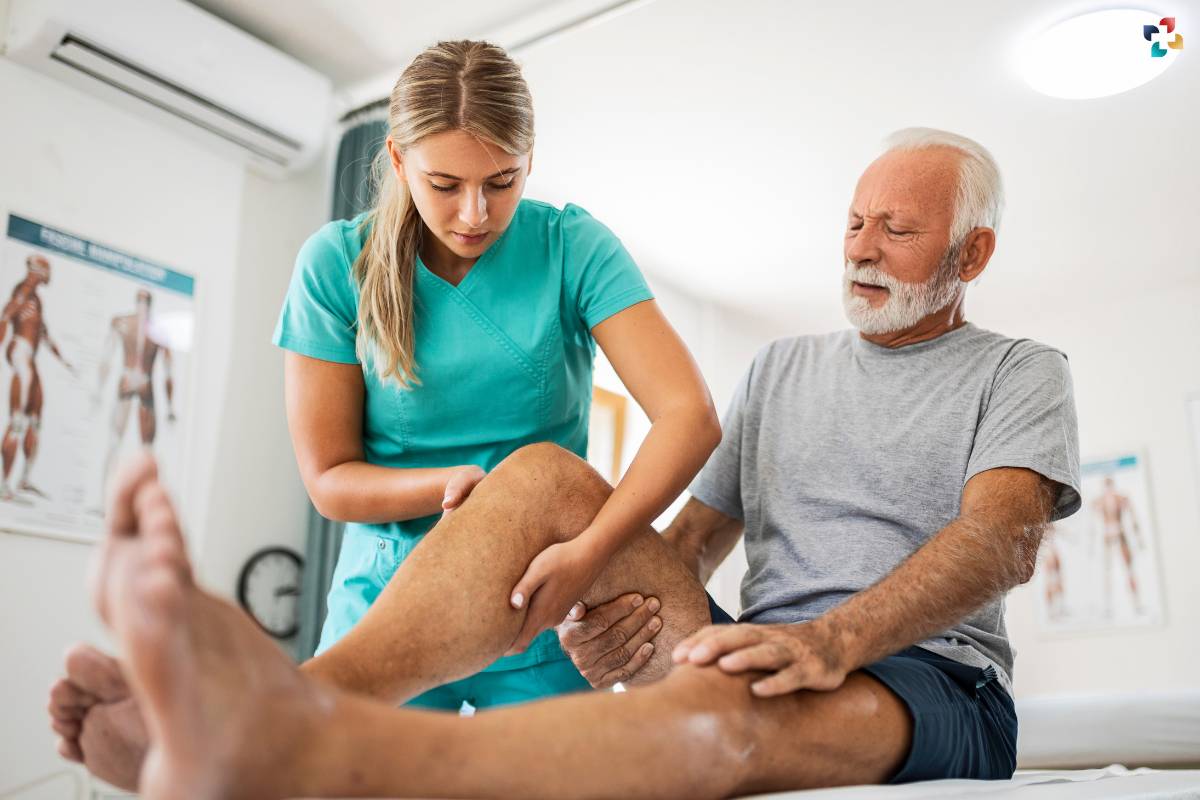Knee arthritis is a widespread ailment that impacts millions of individuals globally. People may have discomfort, stiffness, and decreased mobility as a result, which makes it difficult for them to carry out daily tasks. Despite the fact that knee arthritis can be extremely painful, surgery is not necessarily the first or only course of treatment. We will discuss different approaches to treating knee arthritis in this post, highlighting the fact that surgery is not the only option.
Understanding Knee Arthritis
Knee arthritis, also known as osteoarthritis of the knee, is a degenerative joint disease that primarily affects the knee joint. It occurs when the cartilage, the protective tissue that cushions the ends of bones, wears down over time. Without sufficient cartilage, the bones in the knee joint can rub against each other, leading to pain, swelling, and reduced range of motion.
Here are 2 Most Common Types of Knee Arthritis:
1. Osteoarthritis
This is the most prevalent type of knee arthritis. It typically develops as people age and is often referred to as “wear and tear” arthritis. Osteoarthritis can also result from joint injuries or obesity.
2. Rheumatoid Arthritis
Rheumatoid arthritis is an autoimmune disease that affects the synovium, the lining of the membranes that surround the knee joint. This can lead to joint damage and cartilage loss.
Non-Surgical Treatment Options

Before considering surgery for knee arthritis, it’s important to explore non-surgical treatment options, which can effectively manage symptoms and improve the quality of life. Here are some key approaches:
1. Physical Therapy
Physical therapy involves exercises and stretches that help strengthen the muscles around the knee and improve joint stability. A physical therapist can create a tailored program to address your specific needs.
2. Medications
Over-the-counter pain relievers like acetaminophen or nonsteroidal anti-inflammatory drugs (NSAIDs) can help manage pain and inflammation. Prescription medications may also be prescribed by a healthcare provider.
3. Injections
Corticosteroid injections can provide temporary relief from knee pain and inflammation. Hyaluronic acid injections are another option, which can help lubricate the joint and reduce pain.
4. Weight Management
Maintaining a healthy weight is crucial, as excess weight places additional stress on the knee joint. Weight loss through a balanced diet and exercise can significantly alleviate knee arthritis symptoms.
5. Assistive Devices
Using assistive devices like braces, canes, or crutches can reduce the pressure on the affected knee and provide support during activities.
6. Activity Modification
Avoiding high-impact activities and making modifications in daily routines can help manage knee arthritis symptoms. Low-impact exercises like swimming or cycling can be beneficial.
7. Orthotics
Shoe inserts or custom-made orthotics can improve the alignment of the knee joint and reduce pain.
8. Heat and Cold Therapy
Applying heat or cold to the knee can help alleviate pain and inflammation. Heat relaxes the muscles, while cold reduces inflammation.
9. Acupuncture
Some individuals find relief from knee arthritis through acupuncture, a form of traditional Chinese medicine that involves inserting thin needles into specific points on the body.
10. Diet and Supplements
Consuming an anti-inflammatory diet rich in omega-3 fatty acids and antioxidants can help reduce inflammation in the body. Some people also find relief with supplements like glucosamine and chondroitin.
11. Lifestyle Modifications
Simple lifestyle changes, such as using ergonomic chairs or adjusting your work environment to reduce knee strain, can make a significant difference.
The Role of Surgery in Knee Arthritis
While non-surgical treatments can be highly effective for managing knee arthritis, surgery may be considered in certain cases when conservative approaches do not provide sufficient relief. Surgical options for knee arthritis include:

- Arthroscopy: This minimally invasive procedure involves using small incisions and a tiny camera to examine the inside of the knee joint. It can be used to diagnose and treat conditions like torn cartilage or loose bone fragments.
- Osteotomy: Osteotomy is a surgical procedure that involves reshaping the bones around the knee joint to shift weight away from the damaged area. It is typically considered for younger, active individuals with early-stage knee arthritis.
- Partial Knee Replacement (Unicompartmental Knee Arthroplasty): In a partial knee replacement, only the damaged part of the knee joint is replaced with an artificial implant. It is less invasive than a total knee replacement and is suitable for individuals with arthritis limited to one part of the knee.
- Total Knee Replacement (Total Knee Arthroplasty): Total knee replacement is a major surgical procedure in which the entire knee joint is replaced with an artificial implant. It is considered when knee arthritis is severe and significantly impacts daily life.
When to Consider Surgery for Knee Arthritis
The decision to undergo knee arthritis surgery should be carefully considered in consultation with a healthcare provider. Surgery may be recommended when:
- Non-Surgical Options Fail: If non-surgical treatments do not provide sufficient relief, surgery may be the next step.
- Severe Pain and Disability: When knee pain and disability significantly affect your quality of life and daily activities, surgery may be necessary.
- Progressive Joint Damage: If X-rays or other imaging tests show progressive joint damage, surgery may be needed to prevent further deterioration.
- Significant Joint Deformity: In cases of severe joint deformity, surgery may be necessary to restore proper joint alignment.
- Younger Age with Advanced Arthritis: Some individuals with advanced arthritis may be considered for surgery at a younger age if they are otherwise healthy and active.
Recovery and Rehabilitation After Knee Surgery
Recovery and rehabilitation following knee surgery are critical for a successful outcome. The specifics of the recovery process will depend on the type of surgery performed. However, some general principles apply:

- Physical Therapy: Physical therapy is an integral part of post-surgery recovery. It helps improve the range of motion, strength, and joint function.
- Pain Management: Medications and pain management strategies are used to control pain during the recovery process.
- Gradual Return to Activities: After surgery, you’ll need to gradually reintroduce activities and movements, under the guidance of your healthcare provider.
- Follow-up Appointments: Regular follow-up appointments with your surgeon are essential to monitor progress and address any concerns.
- Lifestyle Modifications: Making long-term lifestyle modifications, such as maintaining a healthy weight and engaging in regular exercise, can help ensure the success of the surgery.
The Importance of Seeking Medical Advice
It is crucial to consult a physician if you have knee arthritis in order to decide the best course of action. Medical professionals are qualified to evaluate your knee arthritis, take into account your lifestyle, and suggest the best course of treatment.
Oftentimes, there are non-surgical options available that can effectively reduce pain and enhance your quality of life instead of requiring surgery. In certain cases, these non-surgical methods can also postpone the need for surgery.
Making decisions on how best to manage your knee arthritis requires an honest and open discussion with your healthcare physician. Taking into account your particular situation, they can offer you tailored advice to assist you in getting the greatest result for the health of your knees.
Also Read: Does Your Pain Mean It’s Time for a Knee Replacement?







